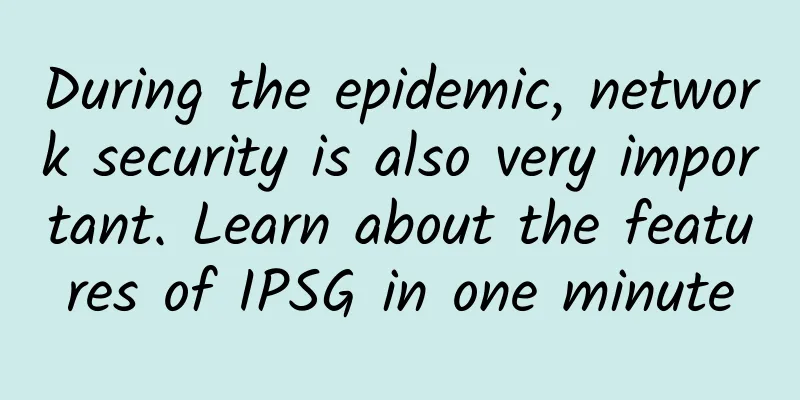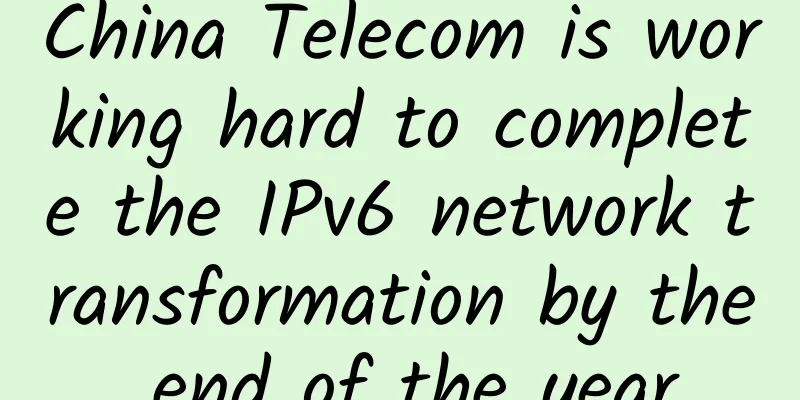During the epidemic, network security is also very important. Learn about the features of IPSG in one minute

|
1. Basic Concepts of IPSG IPSG is the abbreviation of IP Source Guard. IPSG can prevent attacks that spoof the source IP address. As the scale of the network grows, attacks based on source IP are also increasing. Some attackers use deception to obtain network resources and obtain the right to use network resources legally, and even cause the deceived to be unable to access the network or information leakage. IPSG provides a defense mechanism for attacks based on source IP, which can effectively prevent network attacks based on source address deception. The IPSG function is to match and check the IP message based on the binding table (DHCP dynamic and static binding table). When the device is forwarding an IP message, it compares the source IP, source MAC (Media Access Control), interface, VLAN (Virtual Local Area Network) information in the IP message with the information in the binding table. If the information matches, indicating that it is a legitimate user, the message is allowed to be forwarded normally. Otherwise, it is considered to be an attack message and the IP message is discarded. 2. Deployment Scenario Generally deployed on access switches close to users (can also be on aggregation or core switches), it can prevent attacks that spoof source IP addresses, such as illegal hosts impersonating legitimate hosts' IP addresses to gain Internet access or attack the network. The main application scenarios are as follows: Scenario 1: Prevent the host from changing its IP address privately through IPSG. The host can only use the IP address assigned by the DHCP server or the static address configured by the administrator. If the IP address is changed at will, the host cannot access the network, preventing the host from illegally obtaining Internet access rights. The static IP address configured for the printer is only used by the printer, preventing the host from accessing the network by spoofing the printer's IP address. Scenario 2: Limit illegal host access through IPSG (for environments where IP addresses are statically assigned) Fixed hosts can only access from fixed interfaces and cannot change their access locations at will, thus meeting the purpose of interface-based speed limiting. Outsiders cannot access the intranet with their own computers at will to prevent leakage of intranet resources. For environments where IP addresses are dynamically assigned by DHCP, limiting illegal host access is generally achieved through NAC authentication (such as Portal authentication or 802.1x authentication, etc.). 3. Network topology 1. Idea The configuration roadmap is as follows:
II. Configuration procedure (1) Configuring the IP packet inspection function
(2) Configuring a static binding entry [Switch] user-bind static ip-address 10.0.0.1 mac-address 0001-0001-0001 interface gigabitethernet 0/0/1 vlan 10 //Configure HostA as a static binding entry. (3) Verification results Run the display dhcp static user-bind all command on the Switch to view the binding table information. |
<<: 5G Downlink Channel Sounding "CSI-RS"
>>: 5G indoor coverage poses problems for office buildings and operators
Recommend
Why is the latency so high for a simple HTTP call? Let’s capture a packet and analyze it
1. Recently, a strange phenomenon occurred in the...
HostNamaste: 128G-8TB large hard disk VPS monthly payment starts at $4.99, 2G memory special VPS annual payment starts at $36, Los Angeles & Dallas data centers
HostNamaste recently promoted special annual VPS ...
LOCVPS: Hong Kong Cloud/Los Angeles Light Package is online, KVM monthly payment starts at 29.6 yuan
LOCVPS is a long-established Chinese VPS service ...
Zhang Ping, academician of the Chinese Academy of Engineering: 6G faces dimensional disaster
5G is developing in full swing. Currently, the nu...
Ruijie's Minimalist Lighting Appears at the University Informatization Development Seminar, Focusing on New Infrastructure of Smart Campus
On April 16-17, the 2021 University Informatizati...
Listen to the strongest voice of open source in China | Open source projects from major domestic companies gathered at OSCAR Open Source Pioneer Day
Listen to the strongest voice of open source in C...
Can't tell the difference between Wi-Fi and WLAN? Stop confusing them
Usually, we connect to WiFi when we surf the Inte...
6 considerations for new IT leaders in digital transformation
[[397841]] The journey of digital transformation ...
From the practice of operators, why "intelligent multi-cloud" has become the key to the success of cloud strategy
If the symbol of the second industrial revolution...
In the post-epidemic era, what is the effect of 5G infrastructure investment?
[[378112]] Looking back at 2020, "5G" m...
What IoT strategies do global operators have?
After several years of preparation and developmen...
Research on the market development strategy of operators under the background of digital transformation
At present, a new round of world scientific and t...
Practical tips: Teach you step by step to solve the problem of WiFi interference
Suppose there is a large classroom that can accom...
Hot Topic | What’s so great about 5G that makes the United States tremble?
Recently, Huawei's suppression by the United ...
SD-WAN first or security first?
[[419685]] The right secure access service edge (...









![[Black Friday] DediPath: 35% off VPS/Hybrid Servers starting at $1.2/month, 1Gbps unlimited traffic, multiple data centers in Los Angeles and other places](/upload/images/67cabff351bf1.webp)